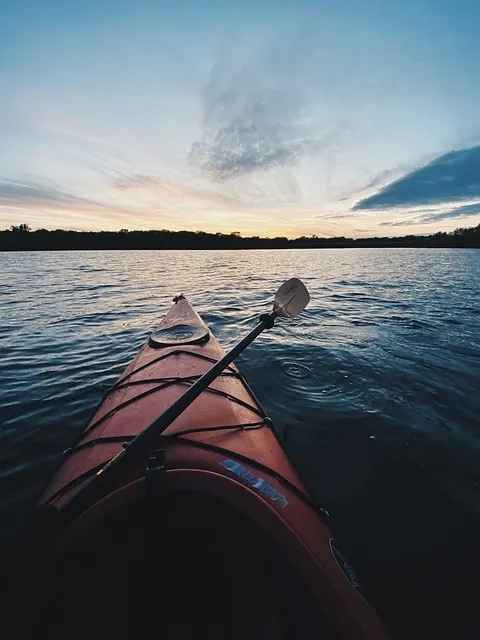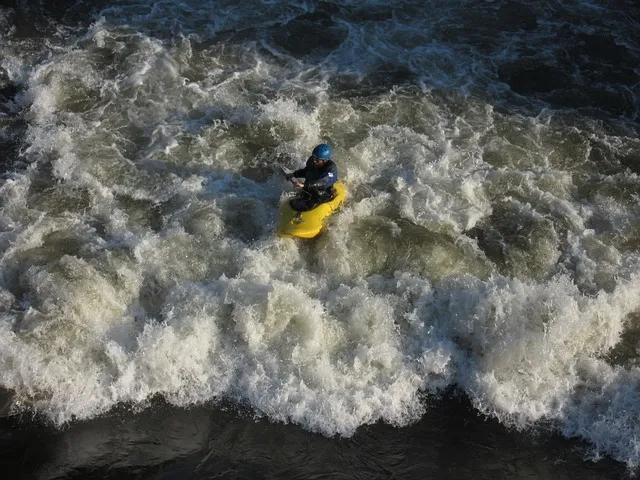When choosing between a single and tandem fishing kayak, anglers must consider factors such as maneuverability, space, comfort, storage needs, and the nature of their angling trips. Single kayaks offer superior mobility and are ideal for solitary anglers who prioritize ease of transport, navigation simplicity, and access to tight or sensitive spots. They are also easier to handle for individuals with limited mobility, providing an uncluttered space that is more accessible. Tandem Fishing kayaks, on the other hand, are better suited for shared experiences, offering additional space, ample storage, and improved stability for those who fish with a partner or require extra gear. They facilitate collaboration and shared responsibilities, which can be advantageous in different water conditions and environments. The choice should align with personal angling preferences, desired solitude versus social interaction, and the specific demands of the intended fishing trips. Both options offer versatility and benefits that can significantly enhance the fishing experience for mobility-impaired users or those looking for a stable, spacious platform. Safety is also paramount, with anglers encouraged to wear life jackets and maintain awareness of their surroundings regardless of the type of kayak chosen. Ultimately, selecting the right fishing kayak involves balancing personal preferences with practical considerations to optimize stability, functionality, and the overall angling adventure.
When casting a line into the serene waters, the choice between a single or tandem fishing kayak can significantly impact your angling experience. This article delves into the nuances of each configuration, guiding you through the essential aspects of single and Tandem kayaks. From enhanced mobility to shared adventures and optimized gear storage, discern the best fit for your fishing expeditions. Whether you paddle solo or with a companion, understanding the pros and cons of these configurations will elevate your kayak fishing journey. Join us as we navigate the key considerations and offer expert tips to ensure your seating arrangement maximizes space and enhances your casting efficiency, all within the realm of a fishing kayak.
Understanding Your Fishing Kayak Options: Single vs Tandem Configurations

When exploring the world of angling, choosing between a single and tandem fishing kayak is a pivotal decision that can significantly impact your experience on the water. A single fishing kayak offers unparalleled maneuverability and allows for a personalized space where each stroke propels you forward with intention and control. This configuration is ideal for anglers who value solitude, or those looking to minimize the complexity of navigation and handle their gear efficiently. The compact design enables easier transport and storage, making it a favored choice among kayak fishermen who frequently travel to various water bodies in search of their catch.
On the other hand, a tandem fishing kayak is a collaborative platform designed for two or more paddlers, offering a shared adventure that can enhance social interactions on the water. This setup is particularly beneficial for pairs or groups looking to combine skills and enhance stability. The additional space allows for more gear, which is advantageous for extended trips where equipment and supplies are more substantial. Tandem kayaks also provide the flexibility to paddle alone when desired, as many models can be configured for a solo journey with one person using the extra seating as additional storage. Whether you’re an avid angler seeking companionship or someone who values versatility in your fishing kayak, understanding the differences between single and tandem configurations is crucial in making an informed decision that aligns with your angling aspirations and comfort on the water.
The Pros and Cons of Single Person Fishing Kayaks for Enhanced Mobility

When considering single person fishing kayaks for those seeking enhanced mobility, there are distinct advantages and potential drawbacks to keep in mind. One of the primary benefits of a solo fishing kayak is its maneuverability; paddlers can navigate tight spaces, weave through dense foliage, or approach fish without casting wide wakes that might spook them. This agility is particularly advantageous for anglers with limited mobility who require more precise control to access their desired fishing spots comfortably and efficiently. Additionally, single kayaks often have less clutter and wider space, making it easier for individuals with certain disabilities to enter, exit, and operate the vessel independently.
However, while single person fishing kayaks offer unparalleled freedom and ease of movement for one angler, they also come with limitations. Stability can be a concern in larger bodies of water where winds and currents might pose challenges that a tandem kayak could handle more effectively due to its wider base. Moreover, tasks such as casting or retrieving a line become less cumbersome with an extra set of hands, which is something a solo kayak cannot provide. Furthermore, the compact nature of single kayaks means they typically have less storage space, which can be a constraint for those who need to carry specialized equipment for mobility aid purposes. When selecting a single person fishing kayak for enhanced mobility, it’s crucial to balance these pros and cons with personal needs and preferences. Opting for features like adjustable seating, ample cargo space, and stability-enhancing designs can greatly contribute to the overall experience and effectiveness of the fishing trip for individuals with mobility considerations. Keyword: fishing kayak.
Navigating the Waters of Tandem Fishing Kayaks: Ideal for Companionship and Gear

When considering a kayak for an angler, the decision between single and tandem fishing kayaks is pivotal based on personal preference and practical needs. Tandem fishing kayaks offer a unique set of advantages, particularly for those who value companionship on the water or need to accommodate more gear. These vessels are designed with space and stability in mind, allowing two anglers to cast lines simultaneously without compromising on fishing room or storage. The added width of a tandem kayak enhances stability, which is crucial for balance when casting or fighting a catch, and also provides a platform where each angler has ample space to move freely without disturbing their companion. This design not only enriches the social aspect of the fishing experience but also enables anglers to bring along additional equipment, such as live wells, extra rods, and coolers, making tandem fishing kayaks a favored choice for those who prefer to travel lighter in a single kayak. The shared responsibility of paddling and maneuvering also adds to the ease of navigating through various water bodies, offering a collaborative approach to overcoming obstacles or navigating tight spaces with greater efficiency. In essence, tandem fishing kayaks are ideal for those who seek a blend of companionship, increased gear capacity, and enhanced stability on their angling adventures.
Key Considerations When Choosing Between Single and Tandem Fishing Kayaks

When selecting between a single and tandem fishing kayak, several factors should be carefully considered to ensure the best angling experience. Space and comfort are primary considerations; a single kayak offers more personal space and is typically lighter and easier to maneuver for solo anglers who prefer a quieter, less crowded waterspace. It’s designed for one paddler and generally features a shorter length compared to tandem models, which can be advantageous for navigating through tight areas or sensitive fisheries where space and stealth are key. On the other hand, tandem fishing kayaks are ideal for partners or groups looking to share the journey and cargo. They provide additional space for casting and storing gear, and their increased stability can accommodate standing for better reach and maneuverability when landing that big catch. The choice between single and tandem fishing kayaks hinges on personal preference, intended use, and the specific needs of the angler or paddlers. Consider the frequency of your outings, the type of water you’ll be navigating, and the nature of your angling companions before making a decision that will enhance both your comfort and your fishing success. Whether opting for the solitude of a single kayak or the camaraderie of a tandem, the right fishing kayak will offer stability, functionality, and an enriching experience on the water.
Maximizing Space and Storage in Your Fishing Kayak Seating Arrangement

When it comes to fishing kayaks, maximizing space and storage is crucial for an efficient and enjoyable outing. The seating arrangement in your fishing kayak can significantly impact how much room you have for movement and for storing your gear. Opting for a single seat design over tandem can provide you with additional space, as the area typically reserved for a second paddler becomes available for extra equipment or larger catches. This additional space allows anglers to bring more supplies, such as tackle boxes, coolers, or even an additional rod, without compromising on stability or maneuverability.
Moreover, thoughtful design and strategic storage solutions are key. Fishing kayaks often come with built-in compartments and dry storage areas that are optimized for the gear you’ll be taking along. The seating can sometimes be adjusted or removed to accommodate bulkier items, further enhancing versatility. It’s essential to choose a kayak with ample storage options and easy access to your equipment, ensuring that your focus remains on fishing rather than on managing your space. By carefully considering the seating arrangement in your fishing kayak, you can transform your vessel into a well-organized angling platform that maximizes both space and storage, allowing for a more productive and satisfying experience on the water.
Tips for Anglers: Maneuvering and Casting Efficiently from Your Kayak Seat

When fishing from a kayak, the position you assume can significantly influence your maneuverability and casting efficiency. For anglers who prefer single seating in their fishing kayak, it’s crucial to optimize leg movement for paddling and balance without obstructing your casting stroke. To enhance your experience, consider positioning yourself slightly backward in the seat, which allows for a more extended range of motion in your legs. This setup facilitates swift paddling strokes and provides stability when making long casts. Additionally, ensure that your hips are above the waterline to maintain buoyancy and avoid sinking into the seat when leaning over for a cast.
For those using tandem kayaks and opting for tandem seating, communication and coordination between anglers become key. The spacious layout of tandem kayaks can offer each fisherman ample space to move without hindering the other. In such configurations, one angler can focus on maneuvering while the other casts, creating a dynamic duo that maximizes fishing opportunities. It’s also essential to distribute weight evenly across the kayak for optimal balance and tracking, which is easier in a tandem kayak due to its wider design. Regardless of your choice between single or tandem seating, always prioritize safety by wearing a life jacket and staying aware of your surroundings to ensure an enjoyable and productive fishing trip from your fishing kayak.
